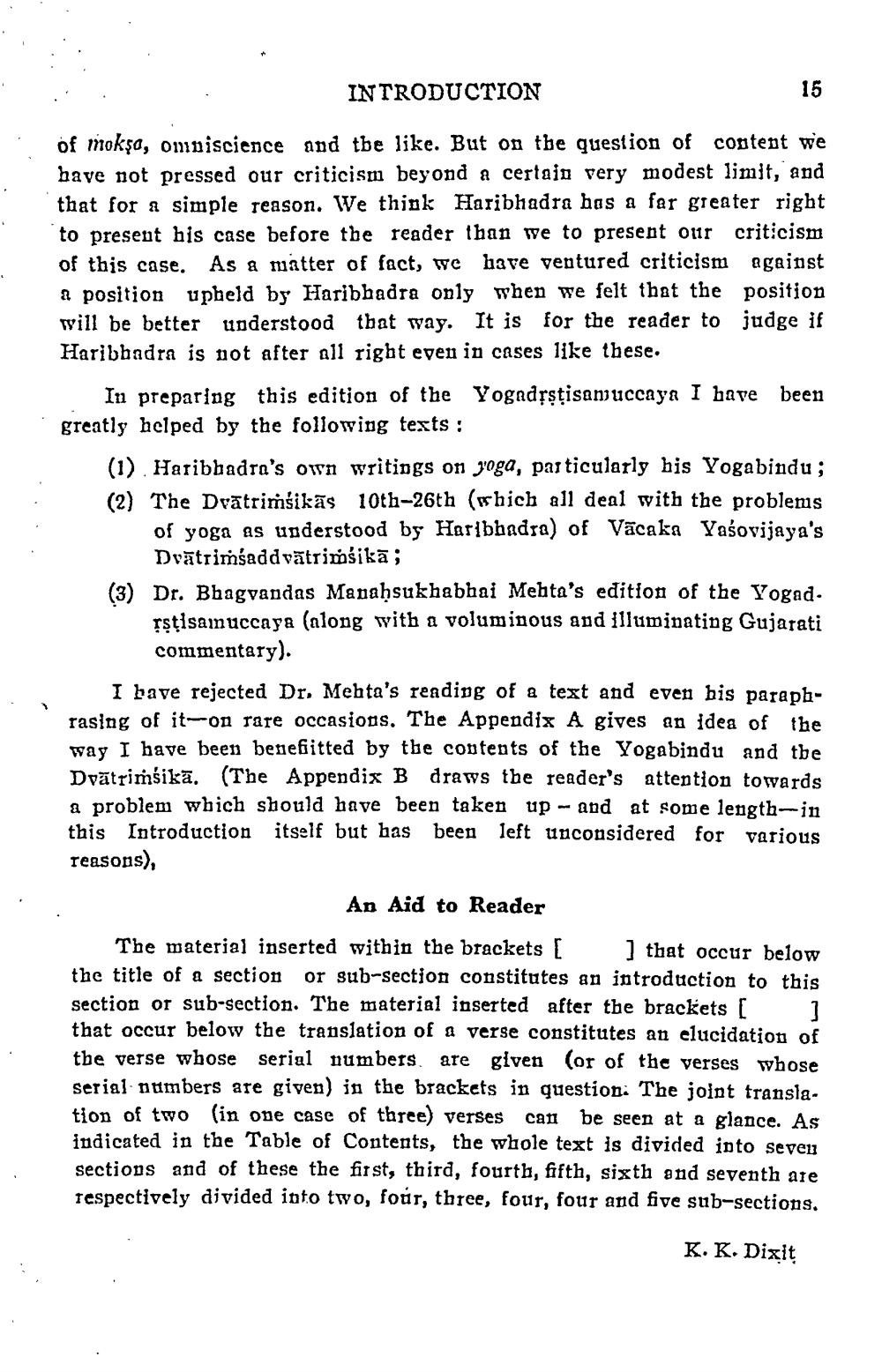________________
INTRODUCTION
15
of mokşa, omniscience and tbe like. But on the question of content we have not pressed our criticism beyond a certain very modest limit, and that for a simple reason. We think Haribhadra has a far greater right to present his case before the reader than we to present our criticism of this case. As a matter of fact, we have ventured criticism against & position upheld by Haribhadra only when we felt that the position will be better understood that way. It is for the reader to judge if Haribhadra is not after all right even in cases like these.
In preparing this edition of the YogadȚstisanzuccaya I have been greatly helped by the following texts :
(1) Haribhadra's own writings on yoga, particularly his Yogabindu ; (2) The Drātrimśikās 10th-26th (which all deal with the problems
of yoga as understood by Haribhadra) of Vācaka Yašovijaya's
Dvātrimśaddvātrimśikā; (3) Dr. Bhagvandas Manaḥsukhabhai Mehta's edition of the Yogad.
rstisamuccaya (along with a voluminous and Illuminating Gujarati
commentary). I bave rejected Dr. Mehta's reading of a text and even bis paraphrasing of it-on rare occasions. The Appendix A gives an idea of the vay I have been benefiitted by the contents of the Yogabindu and the Dvätrimśikā. (The Appendix B draws the reader's attention towards a problem which should have been taken up and at some lengthin this Introduction itself but has been left unconsidered for various reasons),
An Aid to Reader
The material inserted within the brackets [ ] that occur below the title of a section or sub-section constitutes an introduction to this section or sub-section. The material inserted after the brackets [ 1 that occur below the translation of a verse constitutes an elucidation of tbe verse whose serial numbers are given (or of the verses whose serial numbers are given) in the brackets in question. The joint transla. tion of two (in one case of three) verses can be seen at a glance. As indicated in the Table of Contents, the whole text is divided into sever sections and of these the first, third, fourth, fifth, sixth and seventh are respectively divided into two, four, three, four, four and five sub-sections.
K. K. Dixit




